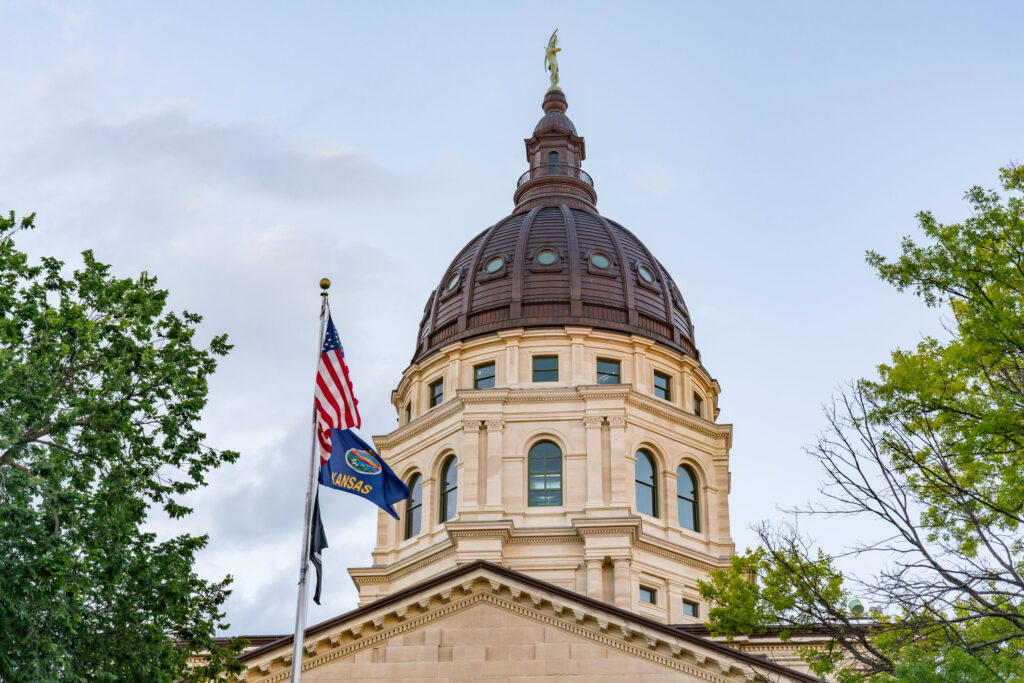This last week was “turnaround week” in the Kansas Legislature during which a bill typically has to be approved by one chamber of the Legislature to move forward through the rest of the session. A few bills that would provide tax relief for Kansas families are very-much alive. They’ll still have the pass the other chamber and then Governor Laura Kelly’s desk to be signed into law.
The Senate passed SB 169, which would establish a 4.75% flat tax is similar to the 5% flat tax of HB 2061 in the House. A flat tax is a form of a tax relief that would simplify the personal income tax system in Kansas from one based on brackets to one rate on all income with the first $15,000 exempted for single filers and $30,000 for married joint filers. A flat tax is a fair reform that makes the tax system easier to understand and would strengthen the economy by increasing the reward for working byreducing costs on people and businesses. 24 states other than Kansas have cut their income taxes since 2012 and have not experienced budget issues because of balancing the cost with spending. Lots of negotiation between the House and Senate will take place but the flat tax would be a productive reform.
In a 36-3 vote, the Senate resoundingly approved SB 33, which would exempt Social Security benefits from the Kansas income tax. According to Kiplinger, Kansas is ranked as the third least tax-friendly state for retirees across the entire country. Kansas public employee retirees pay no income tax but private retirement plans like IRAs, 401ks, certain Social Security benefits, and out-of-state public pensions are all fully taxed. This has caused an outflow of senior citizens from the state. Between 2012 and 2020, 16% of post-college adults who left Kansas were 55 or older, but they accounted for 32% of the adjusted gross income loss.
The Senate amended and passed SB 248 to fully eliminate the food sales tax ahead of its phase out by 2025. Kansas has the 9th highest combined state and average local sales tax rate in the country, so this relief is welcome.
The tax relief is great…if Kansas can keep it. Tax reform under Governor Brownback failed, at least in part, because spending and tax reductions’ hit to revenue weren’t balanced. An 8.5% reduction in spending over several years would have worked. But General Fund spending increased from about $6.1 billion in FY 2012 to $6.3 billion in FY 2017. It was in 2017 when the Legislature imposed the largest tax increase in state history by reversing the 2012 reforms. Similarly, Brownback’s original tax cut proposal was much more modest of about $350 million over five years, but it ballooned to $3.5 billion by the time the then-Senate leadership basically decided to play a game of political chicken.
There’s plenty of places where spending can be addressed though. While states that tax income provide the same public services as states that don’t, incoming taxing states like Kansas spent 52% more per resident in 2020 compared to states that don’t tax income. According to the Kansas Legislative Research Department’s performance-based budgeting report in 2021, there were $815 million going to programs that self-identified as having performance measures with declining outputs in which funding was increasing or no measures listed at all. Discipline with spending to implement tax reform is key for Kansas to experience growth like dozens of other states that have done the same.





